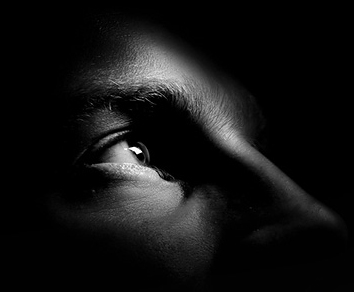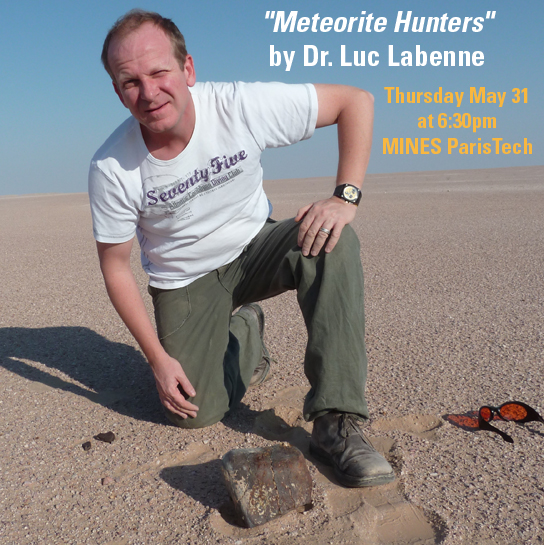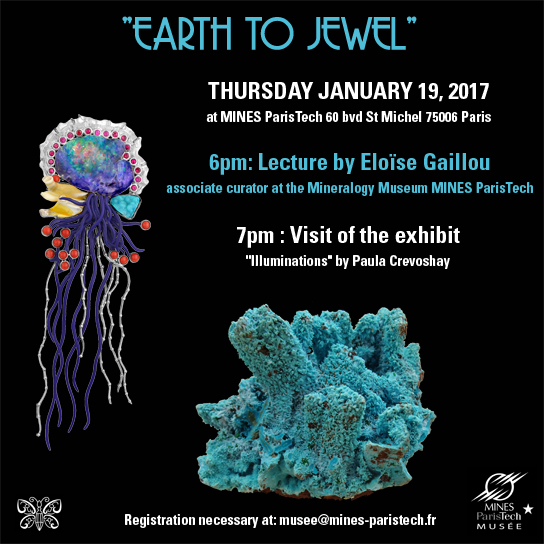

Online conference (in French)
Abstract:
Minerals tell the story of the Earth, and somtimes, they can also tell the story of France. The specimens collected by Frédéric de Dietrich in the 18th century are exemplary in this regard. They also illustrate the process of research and mediation within one of the world's largest collections of mineralogy, the one of the Ecole des Mines de Paris.
The conference will also be available on our YouTube Channel.
****
*
****
Online conference (In French)
Live from the Musée de Minéralogie MINES ParisTech, we will show you hidden treasures of the museum's collection, through thematic conferences on major collectors and collectors. This first conference will be presented by Aude Barthe, intern at the Museum. She will focus on Prince Napoleon (known as "Plon-Plon") and his expedition in the North Seas in 1856. A while after this expedition and others, Prince Napoleon gave the mineral specimens collected during his trips to the Musée de l'Ecole des Mines. Now the permanent collection counts nearly 250 samples recognized from this world traveler of the 19th century.
Watch it on our YouTube Channel.
****
*
****
Online conference organized by the School of Jewelry Arts
Live on February 17th and 18th, 2021
Gold is a fascinating material: the color, the radiance, and especially the combination of its characteristics make it the favorite metal of Humans to create jewels, adornments, and precious objects. In Nature, gold can take different shapes, from the most irregular nuggets to practically perfect crystalline shapes. In jewelry, to create volumes and textures which are as varied as they are astounding, gold is generally alloyed, especially in order to make it more durable, but also to give it a broader color range. From its atomic structure to its different deposits, to its exceptional properties and its unexpected alloys, discover gold in all its incarnations!
Watch it on the YouTube Channel of the School of the Jewelry Arts.
****
*
****
Thursday May 31st, 2018, 6:30pm

Time: 6:30 pm - lecture; 7:30 pm - visit of the exhibition.
Location: MINES ParisTech, 60 boulevard Saint-Michel, 75006 Paris. Room L.118 for the lecture and Mineralogy Museum for the visit of the exhibition (locations will be indicated on site).
Summary: Luc Labenne, a general practitioner who has been practicing for more than 20 years, now dedicates his daily life to meteorites. The search for new meteorites is for Luc a real passion. His meteorites are the subject of extensive scientific research in major universities, institutes and museums in France, Europe, the United States and Japan. He is the founder and manager of Labenne Météorites and a member of the Meteoritical Society. He is also co-founder of the P'tits Pueillets d'Étoiles association, whose goal is to introduce hospitalized children to the world of stars. Luc is also actively involved in Fripon / Vigiciel (network of over 100 cameras to monitor the sky to find meteorites shortly after their fall). Luc Labenne will make us travel through time and space thanks to his lecture.
****
*
****
By Eloïse Gaillou, associate curator, Mineralogy Museum MINES ParisTech

Eloïse Gaillou, Assistant Curator at the Mineralogy Museum, will give a lecture entitled "EARTH TO JEWEL". The reading shall be followed by a VISIT OF THE EXHIBITION "Illuminations - Earth to Jewel" (jewelery of the designer Paula Crevoshay, rough minerals of the Mineralogy Museum collection) at 7 pm, after which attendees are welcome to gather for a discussion and drinks. Space is limited so registration beforehand is required.
Time: 6 pm - lecture; 7 pm - visit of the exhibition.
Location: MINES ParisTech, 60 boulevard Saint-Michel, 75006 Paris. Schlumberger amphitheater (room V.107) for the lecture and Mineralogy Museum for the visit of the exhibition.
Summary: The exhibition "Illuminations - Earth to the Jewel" presents enticing jewelry made by the American artist Paula Crevoshay and natural yet replendent minerals from the Mineralogy Museum collection. This exhibition invites a visualisation of the journey from rough mineral to finished jewel.
Since the dawn of time, minerals besotted mankind. Emeralds, mentioned by Pliny the Elder, were extracted for millennia from their only known deposit until the 16th century in Egypt, near the Dead Sea. Pliny, in his "Natural History", also refers to the hardness and density of rubies. Additionally, the Bible mentions rubies, while "ruby" in Latin (ruber) simply means any "red stone", and in Sanskrit ruby translates as "king of precious stones". Interestingly though, recent discoveries show that spinel was used interchangeably with ruby until the 19th century! Tanzanite, on the other hand, is a recent gemstone only found in Tanzania in 1967. It was popularized by Tiffany & Co., who baptized it for the blue variety of the zoisite mineral. Each gem - and thus every mineral - comes from various geological processes and times. For example, diamond forms at great depths (at least 140 km deep, in the earth's mantle) and generally dates from 1 to 3.5 billion years, while opal, on the other hand, is formed on the surface of the earth, by circulation of rainwater.
This presentation will cover classic gemstones, but also lesser known beauties, such as chrysoberyl and kunzite. The jewels created by Paula Crevoshay, inspired by nature, make it enhance and highlight these unusual gems.
The exhibition "ILLUMINATIONS - EARTH TO JEWEL" lasts until February 1, 2017 at the Mineralogy Museum MINES ParisTech.
Any questions about the museum or the collection ? Contact us
Find all the information to come to the Mineralogy Museum here
Musée de Minéralogie
Mines Paris - PSL
60 boulevard Saint Michel
75006 Paris
OPENING HOURS FROM AUGUST 13th:
TUESDAY: 10am - 12pm and 1:30pm - 6pm.
WEDNESDAY, THURSDAY, FRIDAY: 1:30pm - 6pm
SATURDAY: 10am - 12:30pm and 2pm - 5pm
Closed on National Holidays, Sundays and Mondays
NEXT CLOSING DAYS:
Exceptionnally closed on Saturday August 17, 2024
Mines Paris - PSL will be closed during the Olympic Games. For this reason, the museum will also be closed from SATURDAY JULY 20 UNTIL MONDAY AUGUST 12, 2024.
Find all our temporary exhibits and special events here
